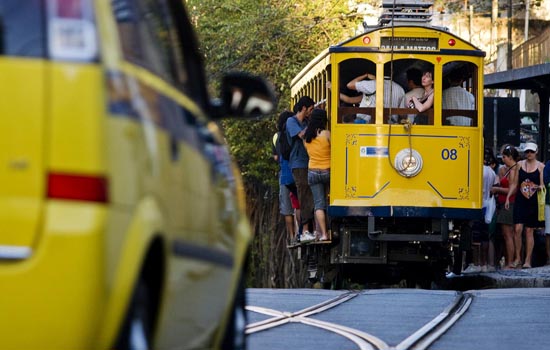
Rio de Janeiro
Santa Teresa | Meet the Rio Neighborhoods
Santa Teresa is a neighborhood full of art and culture exhibits that can be explored using the historic Tramway.
Located in a hilly region and spread over the hillside of the Santa Teresa hill, this district of Rio de Janeiro retains an old world charm, with its winding cobblestone roads and picturesque views of the city and Guanabara Bay. The vicinity was named after a convent started by two sisters in 1750, which they dedicated to St. Teresa of Avila.
Art and culture exhibits

If you are a history and art enthusiast, this is definitely one of the best places of Rio de Janeiro to visit, as it contains several museums and art galleries. The Chácara do Céu Mansion which used to be the residence of the famous art collector Raymundo Maya, contains a museum exhibiting art by Picasso, Monet, Matisse and Candido Portinari. The Centro Cultural Laurinda Santos Lobo housed in a mansion built in 1907 hosts exhibitions and open air concerts throughout the year. This is the spot where Laurinda Santos Lobo, a supporter and promoter of art and culture used to hold her soirees attended by up and coming artists that at the time included Villa Lobos and Isadora Duncan. The Casa de Benjamin Constant, which used to be the estate of one of Brazil’s most influential politicians, is well preserved and sheds light on the lifestyle and culture of Rio de Janeiro in the late 1800’s.
The Historic Tramway
Rio’s only tramway, built in 1896 – the Santa Teresa Historic Tramway – is a popular and unique way to explore the area. The ‘bonde,’ as it is called in Portuguese, begins in the city centre, crosses the ancient aqua duct which was converted into a bridge to serve the tram and makes its way through the winding streets, offering beautiful views of the city on its journey.
Selarón Staircase
This staircase which is an ongoing project of Chilean artist Jorge Selarón, connects the St. Teresa Convent to Lapa’s Rua Joaquim Silva. The path is made up of a mosaic of 250 steps and 125 meters of mirrorwork, ceramic pieces and tiles from over 60 different countries of the world. A project like no other, Selarón has devised a system, whereby the tiles can continuously be changed, thus giving the area a periodically different and vibrant look.
Bloco das Carmelitas
This bloco dedicated to the Carmelite nuns of St. Teresa’s convent has two parades in the streets of Santa Teresa during Carnival. The creators of this bloco humorously invented the story that one of the nuns escaped the convent to participate in the Carnival. The parade held at the beginning of the Carnival, signifies the day she escaped the convent to mingle with the revelers, while the parade on Carnival Tuesday signifies the day she solemnly returned to the convent. Participants wear black veils, to protect the “identity” of the truant nun!
Handicraft Shopping
This neighborhood is a great place to pick up a souvenir made by local artisans. La Vareda, for example, which is on the tram route, stocks colorful artifacts made by local artisans, as well as prints and photographs of historic importance.